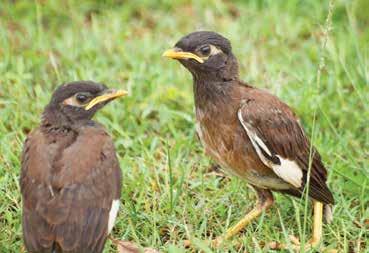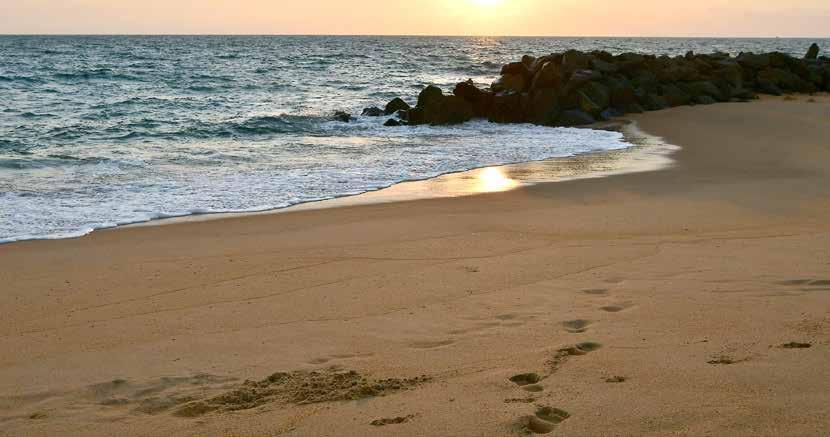REGULAR FEATURES
Common (Indian) Myna Acridotheres tristis By: Marj Webber
C
ommon Mynas (Mynahs) are a bold and noisy pest species that has arrived on Bribie Island within the past 30 years and numbers are increasing.
They are medium-sized birds 23-25 cm in length and weighing 120-140g. They have brown bodies, black heads, yellow bills and legs. Large white patches are revealed on the wings when in flight. Their strutting walk is accompanied by intermittent hops. Lifespan is usually about 4 years. Their bullying behaviour and their habit of overpowering and ejecting other birds from nest sites have aided them to multiply with success. They are usually seen in pairs or small to large flocks. Noisy night roosts are in trees or man-made structures.
In Australia, they occupy most urban and some rural towns and farms along the east and south-east coasts and a short distance west of the Great Dividing Range. Warm to hot climates are their preference but they are also found in cold areas. In 1862 they were introduced from India to Melbourne to eradicate insects in market gardens. There were other introductions to Melbourne up until the 1950s. The plan was not successful, but the Mynas began to thrive and spread. North Queensland introduced them as predators for grasshoppers and cane beetles in the 1800s with similar disastrous consequences. They thrive in areas where the natural environment has been greatly disturbed such as towns and cities and are rarely seen in pristine
habitats. India, Asia and the Middle East are their native homes. Common Mynas are omnivorous scavengers (flying rats) and will eat almost anything including pet food, insects, fruit and the young of other birds. Feeding takes place on the ground. They vigorously challenge other birds and native animals for their food supply. Farmers find them a pest in their orchards and market gardens. IUCN has named them as in the top 100 of the world’s most invasive pests. Breeding takes place mostly from Oct-March. They compete aggressively with other birds taking over their tree hollows and often evicting residents, destroying eggs and killing the young which reduces their breeding outcome. Glider and possum hollows are also a target for the Mynas. Untidy nests of grass, feathers and paper are constructed in cavities in buildings and can introduce mites and lice to the inhabitants. Four to six pale blue eggs are laid, and 1-3 broods can be produced each year. Moreton Bay Council’s approach to the problem is to enhance the natural environment, by habitat plantings. The council does not support a trapping program. Throughout Australia, many councils have Common Myna management plans and in some areas, there are citizen-led control programs to help reduce the increasing numbers. This is an ongoing battle. Issue 134 Feb 26, 2021
43




